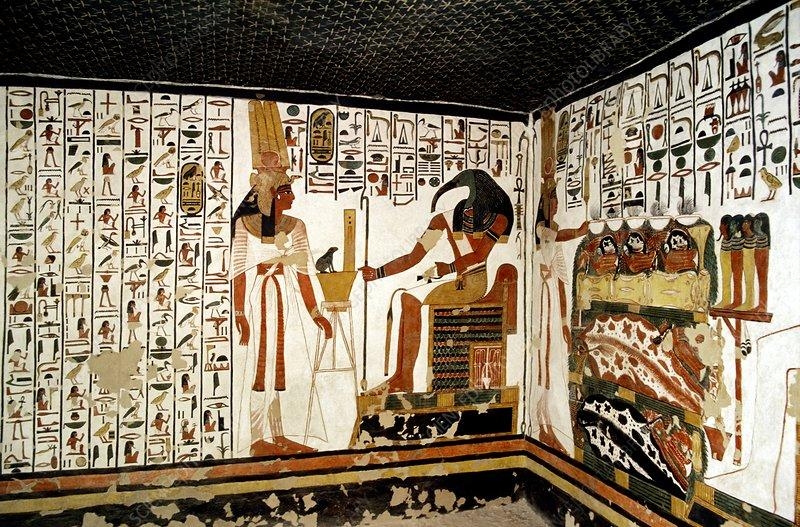
The Valley of the Queens
The Valley of the Queens (QV) is a major component of the World Heritage site of ‘Ancient Thebes with its Necropolis.’Also it is a place where wives of Pharaohs were buried in ancient times as well as princes, princesses and various members of the nobility.
The valley of the kings contain today’s famous surviving tombs: Tomb of Nefertari (QV 66), Tyti (QV 52), Amenherkhepshef (QV 55), and Khaemwaset (QV 44), all open to visitation and preserving extensive and vibrant painted decoration, though to greater or lesser degree damaged by flood, salt, and natural deterioration.
Nefertari-Meryenmut
Nefertari-Meryenmut (Nfri-try mrt n Mwt – ‘Beloved of Mut’) was the first great royal wife of Rameses II. She has sometimes been connected to Ay, because an object bearing his name was found in the tomb. However, it is unlikely as she never has the title ‘king’s daughter’ and it is probable that she was of non-royal origin. She has a temple dedicated to her at Abu Simbel, she appears on several reliefs at Luxor Temple and numerous statues of her have been found throughout Egypt. The tomb of Nefertari is arguably the most beautiful and well preserved tomb in the Theban necropolis.
Merytamen (QV 68)
Merytamen was the daughter of Rameses II and Nefertari (Leblanc 2009, 226ff). She is the 4th daughter in procession of daughters at Abu Simbel and was great royal wife after her mother’s death, Merytamen has a large tomb, architecturally comparable with QV 66, 71, and 80, including magical niches in the burial chamber. The poor preservation and fragmentary nature of the wall paintings makes it difficult to understand the tomb’s decorative program; extant scenes are all ‘divine,’ showing the queen offering to and receiving favors from the gods with short text captions, in contrast to the text-heavy Book of the Dead chapters in QV 66, 80 and 60.
Bentanat
Bentanat was the daughter of Rameses II and Isis-Nofret, and the oldest daughter of the king. She has a foreign name meaning ‘Daughter of Anat’ (a Canaanite goddess with a warlike aspect)
The Valley of the Queens continued to be extensively used during the reign of Rameses III, but its character changed once again. At this time the Valley became the burial place not only of the royal women but also for many of the princes. these tombs are smaller than those belonging to kings. The plans of these tombs usually consist of a small antechamber, a long narrow corridor with several side chambers, and at the end - the burial chamber
The Valley of the Queens is located across the Nile from Luxor, near to the Valley of the Kings, the Colossi of Memnon and the Temple of Hatshepsut.

